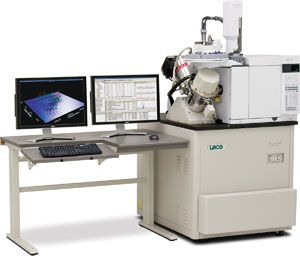LECO's Pegasus 4D GCxGC-TOFMS
3-MCPD ester analysis is a much faster and more economical method when using the LECO's Pegasus 4D GCxGC-TOFMS and ChromaTOF single software platform. The result is a sensitive method and a clear reduction of cost-per-analysis.

The current methods for 3-MCPD-ester analysis in edible oils and fats actually measure the total 3-MCPD content of the oil or fat after hydrolysis. The procedures consist of a number of subsequent steps starting with the hydrolysis, removal of the fatty acids (as their FAMEs), extraction of the free 3-MCPD with salting out, derivatisation with phenylboronic acid, preconcentration by solvent evaporation and finally GC-MS analysis. Potential problems in the procedure are degradation of the 3-MCPDs during (alkaline) hydrolysis resulting in high detection limits, and the formation of additional 3-MCPDs if chloride salts are used in the salting out extraction.
Using LECO’s Pegasus 4D GC◊GC-TOFMS with large volume injection (LVI) gives faster, more reliable and more sensitive 3-MCPD analysis in oils and fats. The salting out step can be eliminated too. LECO‘s incredible ‚no-clean‘ Pegasus ion source means dirty samples and large volumes are easily injected without compromise of the data or instrument operation. Low detection limits are obtained even at low extraction recoveries. Additionally, the final evaporative pre-concentration step can be eliminated making the LECO method faster and reduces manual sample handling steps.
A clear advantage of the LECO Pegasus 4D GC◊GC-TOFMS is the substantially improved resolution of the GC separation leading to the elimination of interferences even at very low 3-MCPD levels. Together this results in a faster, more economical method, reducing the amount of manual sample handling, improving accuracy and a reduction of the cost-per-analysis. Contact LECO SepSci@leco.de for more instrument and application details.

Regulatory Deadlines and Supply Chain Challenges Take Center Stage in Nitrosamine Discussion
April 10th 2025During an LCGC International peer exchange, Aloka Srinivasan, Mayank Bhanti, and Amber Burch discussed the regulatory deadlines and supply chain challenges that come with nitrosamine analysis.





